|
|
Post by Dave Homewood on Dec 21, 2022 18:49:27 GMT 12
By 1939 there were a lot of very nice, often new and quite useful and powerful launches and other private pleasure craft in New Zealand, especially around Auckland. Did the NZ Government impress private boats into Navy service or RNZAF Marine Section service, like they did with private planes in the 1939-40 period?
Or were all the small boats used by the Navy and RNZAF specially built for the role?
|
|
chis73
Flight Lieutenant
 
Posts: 87
|
Post by chis73 on Dec 22, 2022 9:16:54 GMT 12
Morning Dave, Don't know about private motor boats & launches, but a number of private company coastal vessels & fishing trawlers were impressed into service as minesweepers and danlayers, at least until 1942, when the Government-ordered vessels began arriving (such as the Bird-class corvettes & Isles-class armed trawlers that came from Britain and the locally built Castle-class trawlers) . For smaller boats, I think they probably had enough Fairmiles & HDMLs (once they arrived, again 1942). I would try a quick browse through S.E. Waters official history of the RNZN in World War II (e-book available here), it should have all the details you're looking for (try chaps 12, 14 & 18 for starters). |
|
|
|
Post by Dave Homewood on Dec 22, 2022 9:54:22 GMT 12
Thanks, ah yes that makes sense.
|
|
|
|
Post by davidd on Dec 23, 2022 8:27:13 GMT 12
Yes, plenty of "impressed" launches, etc., plus some ordered for particular Navy or RNZAF purposes. One of latter was to be a "torpedo recovery vessel", ordered in 1943 in anticipation of the arrival of our 63 TBF Avengers under allocation. However, this vessel was never built, as all the NZ civilian boat-builders were far too busy with Navy orders as well as the large contracts to supply various vessels for the United States Army, and the US Navy. In January 1944 the American theatre commander indicated that the NZ TBFs would not now be required as torpedo bombers in the forward area, so the torpedo recovery vessel, even had it been built, would never have had any work to do. Other vessels were impressed or otherwise acquired "for the duration" by other means, such as the RNZAF coming into possession of the so-called "PANAIR", a very attractive large launch which happened to be the property of that very large American airline usually attributed to a gentleman by name of Juan Trippe (spelling?) Another specialised launch was ordered by RNZAF for a purpose I cannot recall. In this case, the launch was never built; however a detailed sketch of this proposed vessel exists in the RNZAF Marine Craft Mafile, the only such sketch I have ever seen in said file.
However, the largest source of specialised marine craft for the RNZAF was the United States Navy, with which the RNZAF had a special arrangement whereby the local theatre commander would supply suitable craft from his "pool" of such craft, quite independent of our "Lend Lease" arrangements. These "pools" existed for all types of supplies and equipment, including aircraft, construction machinery, saw-milling equipment, and all support MT and auxiliary vessels. From this source came our three "Crash" launches (as the Americans termed them, equivalent to "ASR" in the RAF), and a large number of refuelling launches, tow boats, and the like. Many of these were constructed from wood, and as such were considered only as "temporary" vessels in that they were only expected to last for duration of the war, but many in fact were still going strong well after this. Unlike the case of our Land-Lease aircraft, the NZ Govt never had any title to these vessels, but were expected to care for them as for our own, even if they were second-hand, which many in fact were (including those crash boats). Also supplied under similar arrangements was a large proportion of our MT vehicles in the forward area, and also quite a lot of the milling equipment and vehicles (including bull-dozers) in our forward area saw mills. Although practically all this "loaned under local arrangements" equipment reverted to their American government owner after VJ-Day, a small proportion was retained (presumably by some sort of horse-trading arrangements) and returned to New Zealand, including those three fabulous-looking crash boats, plus some other marine craft, including refuelling barges (latter probably left behind by US Navy in Fiji). The rather large amount of American military vehicles abandoned in New Zealand whilst awaiting overhaul by NZ civilian contractors (mostly in Petone area from memory, stand to be corrected) was quite another cup of tea.
|
|
zkdex
Squadron Leader
  
Posts: 101
|
Post by zkdex on Feb 15, 2023 15:50:15 GMT 12
Davidd is correct, plenty of civilian vessels were impressed for military use, mostly by the Navy. Some were patrol vessels with Q pennants, while others served with the Naval Auxiliary Patrol Service (NAPS) and had Z pennants. Once the purpose built HDML and Fairmile launches (Q pennants) became available, many of the impressed vessels were released. From memory, the RNZAF launches had id numbers prefixed with a W.
Not all of these vessels were sea-going, the RNZAF had a launch or two on Lake Rotorua!
|
|
|
|
Post by davidd on Feb 15, 2023 18:06:52 GMT 12
Yes, the RNZAF launches were normally referred to by their bow number, and in signals, documents, log books and unit histories, etc., these numbers were always prefixed with a "W", but in fact, this letter was ever painted on them at all, just the number. I have always assumed that the "W" indicated Water (although that sounds pretty wishy - washy), but so far I have never found any official explanation for the practice of referring to these vessels with the invisible prefix letter, nor for the choice of "W". Many of the impressed launches (and other craft) also had names (usually their civilian one) but most did not, such as W1.
|
|
|
|
Post by Dave Homewood on Mar 10, 2023 19:53:52 GMT 12
Here is an interesting piece of history, sort of semi-related to civilian boats being impressed. 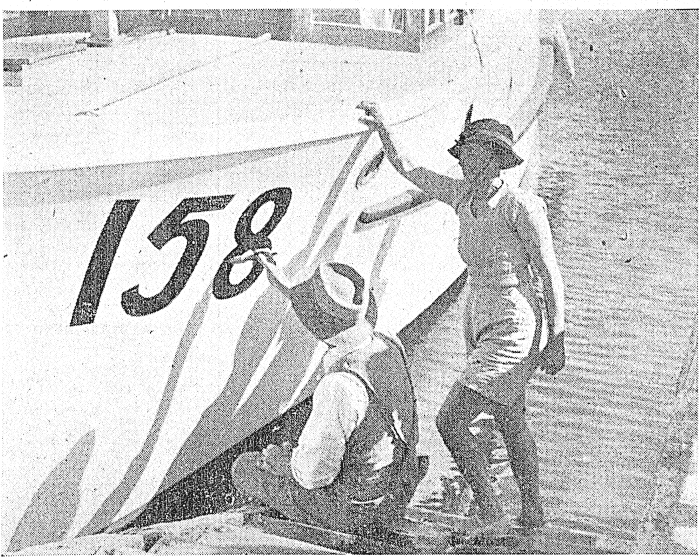 A WARTIME MEASURE FOR AUCKLAND PLEASURE CRAFT A WARTIME MEASURE FOR AUCKLAND PLEASURE CRAFT To enable boats to use the eastern passage of the harbour for leaving and entering port, season licences are being issued by the Auckland Yacht and Motor-Boat Association. Above, painting a- registration number on a launch at St. Mary's Bay on Saturday. NEW ZEALAND HERALD, 23 OCTOBER 1939 |
|
|
|
Post by Dave Homewood on Mar 12, 2023 18:21:45 GMT 12
And Minhinnick worked his magic with his 'Old Soldier Sam' cartoon strip in the NZ Herald on the 16th of December 1939.  |
|
|
|
Post by Dave Homewood on Mar 13, 2023 15:14:21 GMT 12
Another example of a civilian owned pleasure craft in Auckland with the military registration number. LATEST ADDITION TO AUCKLAND'S FLEET OF PLEASURE CRAFT The Lady Alice, a new cruiser built by her owner, Mr. G. Roberts, of St. Heliers Bay, shortly after her launching yesterday. The boat is 30 feet overall with a beam of 9 feet. NEW ZEALAND HERALD, 12 JANUARY 1940 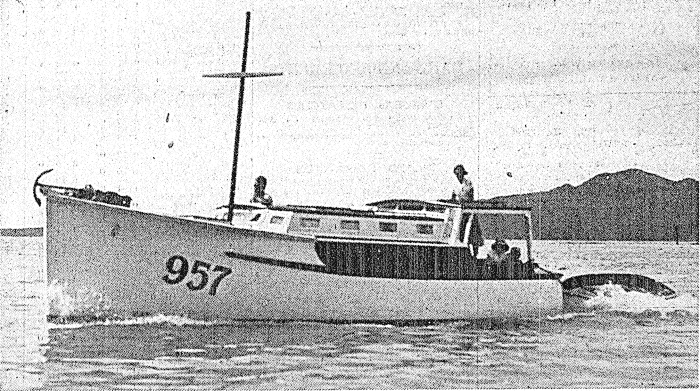 |
|
|
|
Post by Dave Homewood on Mar 13, 2023 18:03:09 GMT 12
Here is another boat with the registration number. Or what was left of it. 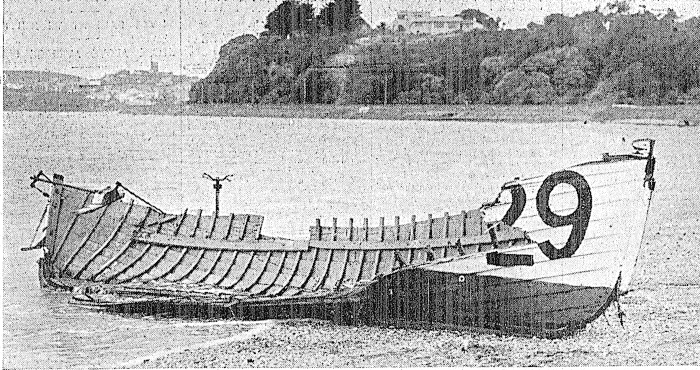 Wreckage of Mr. E. F. Laslett's 20ft launch — a converted lifeboat — which was driven from St. Heliers by the gale along the waterfront, striking the breastwork repeatedly until, she broke up, near Kohimarama Wharf. NEW ZEALAND HERALD, 15 JANUARY 1940 |
|
|
|
Post by Dave Homewood on Mar 28, 2023 17:18:29 GMT 12
A couple more Auckland boats with the registration numbers. MAKING READY FOR THE NEW SEASON: Owners took advantage of Saturday's fine weather to prepare pleasure craft at Orakei. NEW ZEALAND HERALD, 9 SEPTEMBER 1940 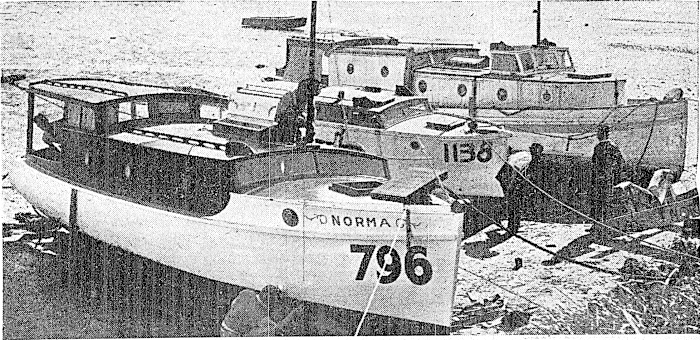 |
|
|
|
Post by davidd on Mar 28, 2023 18:31:10 GMT 12
Presume these vessels are those "registered" with the Naval Auxiliary Patrol Service (NAPS), but were actually civilian owned. According to the official history of the RNZN ("The Royal New Zealand Navy", by S D Waters, 1956, page 210:)-
"Authority for the formation of a Naval Auxiliary Patrol Service was given by War Cabinet on 6 December 1941. The objects of the service were to assist in the protection of harbours against enemy attack, particularly by small craft, the spotting of mines dropped by parachutes, and the saving of life. The NAPS was constituted under Naval Defence Emergency Regulations 1941 and was deemed a part of the RNZN. Enlistment was open to over the age of 16 years, but its expressly provided that such enlistments did not absolve any person from liability for service with any of His Majesty's armed forces or from any liability to which he might be subject under the National Service Emergency Regulations, 1940. (DJD, Why was it considered important to mention mines dropped by parachutes, when I would have thought that mines deposited by submarines and surface raiders in our waters would be the more likely? Perhaps I am reading too much into it?)
"The motor-boats employed in the service were the property of the owner-members of the NAPS. Owner-masters were entered as chief petty officers and deputy skippers as petty officers. They and their crews were given a modified naval uniform. Service was honorary, but if called up for fulltime service, members were to receive pay and allowances. Fuel and other stores were provided by the naval authorities for use on duty.
The Naval Auxiliary Patrol Service, which was, in effect, a naval Home Guard organisation, operated under the orders of the Naval officers in charge of the four main districts. The duty boats patrolled their respective harbours from sunset to sunrise daily, those at moorings being held in readiness for instant service in the event of an emergency. Instruction was given in signalling, chart work, coastal navigation, etc. Members of the NAPS showed keen interest and carried out their duties efficiently. The strength of the NAPS varied from time to time, due to men being called up for active service. Total entries were approximately 570, made up as follows: Auckland, 180, Whangarei 84, Wellington 140, Lyttelton 68, and Dunedin, 98. The service was disbanded early in 1944."
|
|
|
|
Post by Dave Homewood on Mar 28, 2023 18:54:55 GMT 12
See my post above explaining the numbers. It was simply so private boats could leave and then reenter the harbour without arousing suspicion. I am sure sailors noted al the numbered boats passing by the entrance going either way.
|
|
|
|
Post by davidd on Mar 28, 2023 20:08:37 GMT 12
Whoops, sorry, missed that vital piece of information Dave, the one mentioning intention of the numbers (March 10th). This was well before the NAPS scheme of course. Still it gives a slight hint of the number of active private boats in Auckland at the time (1939/40).
|
|
|
|
Post by Dave Homewood on Mar 28, 2023 20:31:38 GMT 12
Yes, then, like now, it seems Aucklanders all owned a boat, or their mates did. Through the 1930s NZ Herald newspapers there are so many photos of the boating scene (mostly runabouts and cabin types more than yachts) and reports of newly built boats, new boats being tested, etc. I think someone at the Herald was obsessed with the boating scene, so it makes a great record.
|
|
|
|
Post by Peter Lewis on Mar 28, 2023 20:58:39 GMT 12
Yes, then, like now, it seems Aucklanders all owned a boat, or their mates did. Through the 1930s NZ Herald newspapers there are so many photos of the boating scene (mostly runabouts and cabin types more than yachts) and reports of newly built boats, new boats being tested, etc. I think someone at the Herald was obsessed with the boating scene, so it makes a great record. True, and in the same vein all Aucklanders either lived in a house on Takapua Beach or with a view of Rangitoto. |
|
|
|
Post by Dave Homewood on Apr 1, 2023 22:29:44 GMT 12
Another of the specially numbered and registered boats, from the NZ Herald dated 17th of December 1940. NEW PLEASURE CRAFT LAUNCHED: A 43ft. bridge-deck cruiser launched during the week-end at St. Mary's Bay. 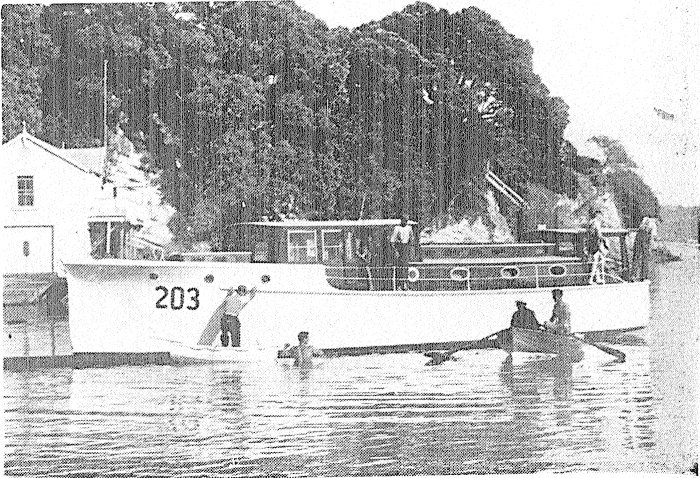 |
|
|
|
Post by davidd on Apr 2, 2023 12:45:44 GMT 12
No. 203 is a pretty good looking vessel, but my eyes spotted something a little unexpected. The bow has a very unusual outline, something I would normally associate with destroyers of Japan's Imperial Navy in the 1930's, what I believe was termed the "Swan-neck' bow. However, the Auckland example here is a rather subtle variation.
|
|
|
|
Post by Dave Homewood on Apr 2, 2023 16:01:10 GMT 12
Yes, it's an interesting design. Some of those 1930s and early 40s launches and cruisers were really nice looking boats. I wonder how many are still active on the harbour nowadays.
|
|
|
|
Post by Dave Homewood on Apr 2, 2023 17:26:10 GMT 12
ANNUAL HOLIDAY REGATTA: Two pictures at the Maraetai aquatic and beach carnival held yesterday in perfect weather. NEW ZEALAND HERALD, 3 JANUARY 1941 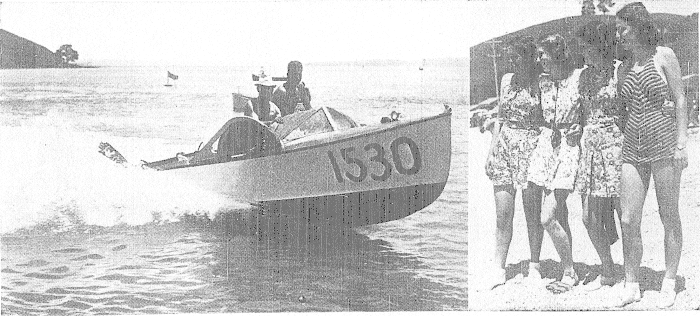
|
|